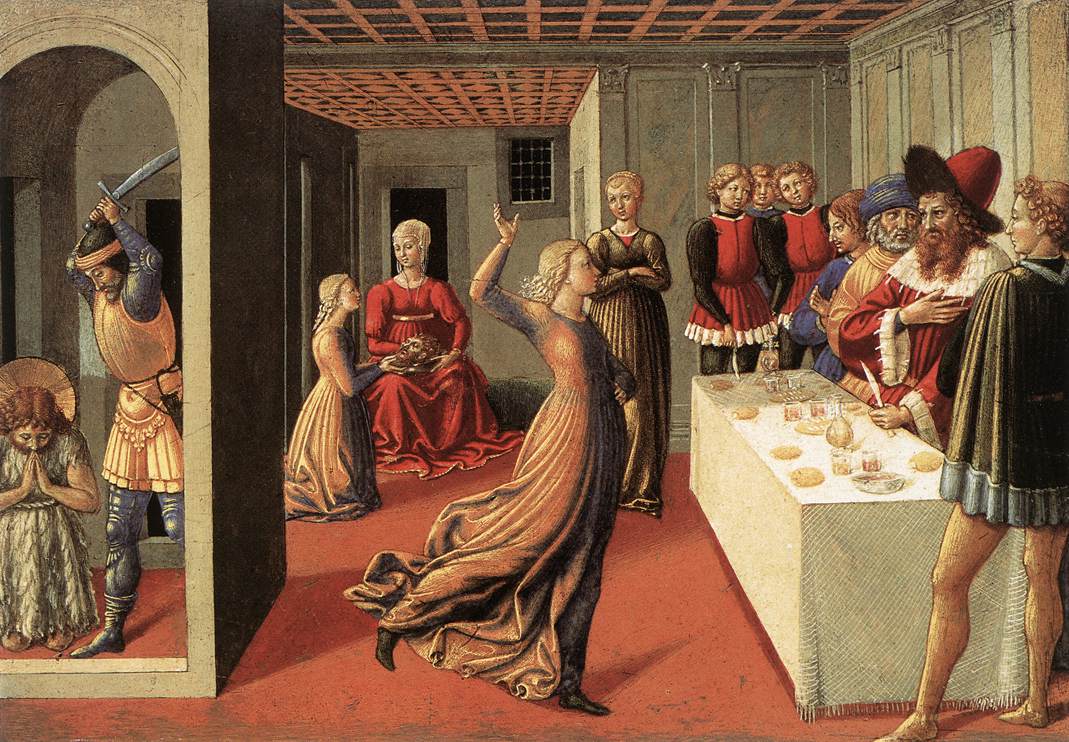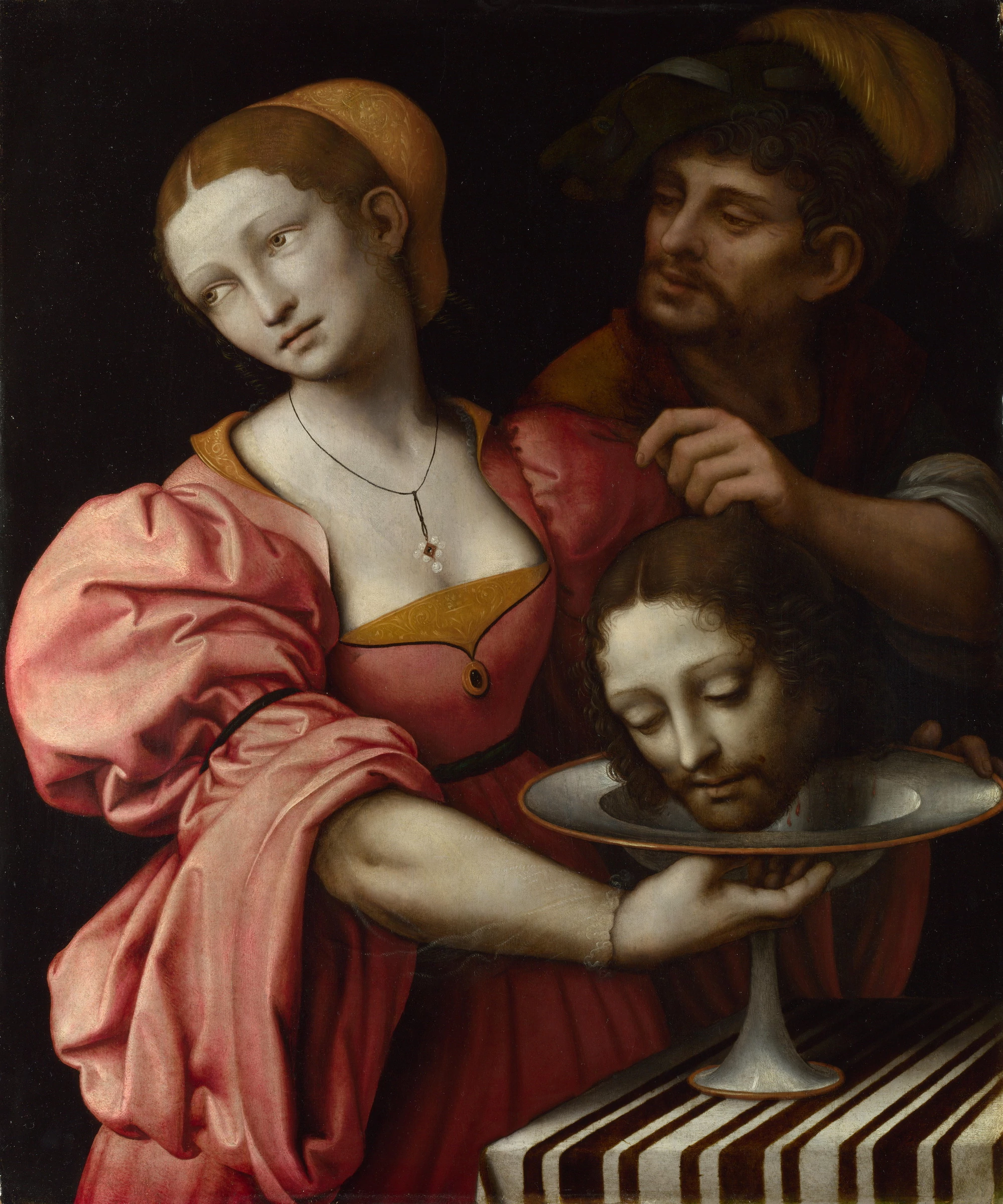Salome Larrea Muñoz Only: Exploring The Singular Impact Of A Famous Name
When we hear the name Salome, a singular image often springs to mind, doesn't it? It's almost as if we're searching for that one definitive figure, a "Salome Larrea Muñoz only," perhaps, to hold all the stories. Yet, the layers of history and scripture show us a name with surprising depth, one that echoes through time with a powerful, if sometimes misunderstood, presence.
Many people, you know, find themselves drawn to the tales of Salome, especially her striking role in biblical accounts. There are, actually, two women named Salome mentioned in the Bible, but it's often one particular story that captures our collective imagination. This ancient name, it truly carries quite a bit of weight, and so many different interpretations.
This article, you see, will explore the fascinating narratives surrounding the figure commonly known as Salome, drawing directly from historical and scriptural accounts. We'll look at her various appearances, her actions, and how her story, in a way, continues to resonate. It's really about piecing together the vibrant picture of a woman whose legacy is, quite frankly, rather complex and enduring.
Table of Contents
- Biography of Salome: A Glimpse into Ancient Narratives
- Personal Details and Bio Data of Salome
- The Daughter of Herodias: A Pivotal Role
- Salome and John the Baptist: A Tragic Request
- The Righteous Salome: A Different Perspective
- Salome in the Gospels: Witnessing Jesus' Ministry
- Cultural and Artistic Interpretations: Beyond the Bible
- Frequently Asked Questions About Salome
- A Lasting Legacy: Why Salome Still Captivates
Biography of Salome: A Glimpse into Ancient Narratives
When we talk about Salome, we're usually referring to a figure steeped in ancient history, particularly within biblical texts and later historical writings. It's interesting how, for many, the very idea of a "Salome Larrea Muñoz only" might suggest a singular, definitive story, but the truth is a bit more layered. The primary Salome that captures so much attention is the daughter of Herodias, a character whose actions, you know, profoundly impacted early Christian history. She is commonly identified with the daughter of Herodias who, according to accounts in the Gospel of Mark and the Gospel of Matthew, danced for Herod Antipas. This dance, quite famously, led to a very grave request.
This particular Salome, daughter of Herodias and stepdaughter of the tetrarch Herod Antipas, became the immediate agent in the execution of John the Baptist. He had, as a matter of fact, condemned her mother’s marriage, which set in motion a chain of events. While her presence is not as prominent in every biblical text, her association with these events is, truly, rather significant. Josephus, in his Jewish Antiquities, named her, giving us a clearer historical reference beyond the biblical texts where she is often unnamed.
Personal Details and Bio Data of Salome
It's always fascinating to try and gather details about historical figures, especially when seeking to understand a "Salome Larrea Muñoz only" type of focus. For the biblical Salome, our information comes from various ancient sources. Here’s a summary of what we know about the most prominent Salome figure:
| Detail | Information |
|---|---|
| Name (Biblical) | Salome (named by Josephus, unnamed in Gospels) |
| Family Connections | Daughter of Herodias, stepdaughter of Herod Antipas |
| Key Role | Danced for Herod Antipas, leading to John the Baptist's execution |
| Mentioned In | Gospels of Mark and Matthew (unnamed), Josephus's Jewish Antiquities (named) |
| Historical Period | 1st Century AD |
| Significance | Central figure in the narrative of John the Baptist's death |
The Daughter of Herodias: A Pivotal Role
The story of Salome, daughter of Herodias, is one that has echoed through centuries, very much shaping how we remember her. She is, quite simply, the daughter of Herodias, the wife of King Herod Antipas. This relationship, you know, is at the heart of the dramatic events that unfold. Her mother, Herodias, had a strong dislike for John the Baptist because he had, rather openly, condemned her marriage to Herod Antipas, her former husband’s brother. This condemnation, as a matter of fact, was a major point of contention.
The Gospels of Matthew and Mark both mention her, primarily in connection with her involvement in the events surrounding the execution of John. She is unnamed in the biblical text but named by Josephus in the Jewish Antiquities. It's interesting how this single act, her dance, truly became so pivotal, forever linking her name to this tragic tale. Her role, in a way, highlights the power dynamics and moral struggles of that ancient court.
Salome and John the Baptist: A Tragic Request
The interaction between Salome and John the Baptist is, arguably, the most famous part of her story. At King Herod’s palace, the young princess Salome, who sits at the banquet table with her stepfather, Herod, and his court, performed a dance that greatly pleased Herod Antipas. He was, apparently, so delighted that he promised her anything she desired, up to half his kingdom. A page warns Narraboth that this dance could be dangerous, foreshadowing the gravity of the situation.
Prompted by her mother, Herodias, Salome asked for the head of John the Baptist on a platter. This request, you know, was a shocking one, and Herod was reportedly distressed, but felt bound by his oath made in front of his guests. She was the immediate agent in the execution of John the Baptist, who had condemned her mother’s marriage. This act, in a way, sealed her place in history, a very dark moment, indeed. For anyone seeking to understand "Salome Larrea Muñoz only," this specific narrative is often the first thing that comes to mind, highlighting her unique, albeit controversial, impact.
The Righteous Salome: A Different Perspective
It’s a common misconception that there’s only one Salome in biblical history, especially when one considers the desire for a "Salome Larrea Muñoz only" definitive figure. Yet, the texts tell us there are two women named Salome in the Bible, but only one is mentioned by that name in the Gospels. The other Salome, often called "the righteous Salome," presents a very different picture. She was, you see, the wife of Zebedee and the mother of the apostles James and John.
This Salome is identified as one of the women who followed Jesus and ministered to him during his earthly ministry. She is mentioned in the New Testament gospels of Matthew and Mark, among those "looking on from afar, among whom were Mary Magdalene, Mary the mother of James the less and of Joses, and Salome, who also followed." This Salome's story is one of devotion and discipleship, a stark contrast to the dramatic narrative of Herodias's daughter. It’s important to remember, too, that the name Salome was, apparently, quite common in that era.
Salome in the Gospels: Witnessing Jesus' Ministry
The presence of Salome among the women who supported Jesus offers a truly compelling aspect to her story. She is, in fact, often considered to be the mother of the apostles James and John, the sons of Zebedee. This connection places her very close to Jesus' inner circle, which is, quite frankly, a significant detail. She was one of the women who traveled with Jesus and his disciples, providing for them out of their own means.
Her presence at the crucifixion is also noted, showing her unwavering commitment. “There were also women looking on from afar, among whom were Mary Magdalene, Mary the mother of James the less and of Joses, and Salome, who also followed.” This shows her enduring faithfulness, even during Jesus' most challenging moments. So, while one Salome is known for a tragic dance, another is remembered for her quiet strength and loyalty, truly showing the diverse ways a single name can appear in history.
Cultural and Artistic Interpretations: Beyond the Bible
The story of Salome, particularly the daughter of Herodias, has captivated artists, writers, and composers for centuries. It's a tale that, in a way, lends itself to dramatic interpretation, far beyond just biblical accounts. Oscar Wilde, for example, penned a famous play titled "Salome," which premiered in 1896. The original version of the play was first published in French in 1893, with an English translation published later. Wilde’s play, you know, really brought a new, intense psychological depth to the character.
The interference of the censor has been a part of the play's history, highlighting its controversial nature. Oscar Wilde immediately announced his intention of changing his nationality, a characteristic jest, which was only taken seriously, oddly enough, in Ireland. This play, and the subsequent opera by Richard Strauss, cemented Salome's image in Western culture as a figure of dangerous allure and tragic consequence. There is, for instance, a topless scene that Jessica Chastain does in a film adaptation; it lasts for close to one minute, showing how the character continues to inspire bold artistic choices. Throughout the rest of the movie, she keeps a long, red scarf draped over her shoulders covering her, suggesting a mix of modesty and sensuality. These interpretations, truly, keep the story of Salome alive and relevant, allowing us to see her through many different lenses.
Learn more about biblical figures on our site, and link to this page for more ancient history insights.
Frequently Asked Questions About Salome
1. Is there only one woman named Salome in the Bible?
Actually, there are two women named Salome in the Bible, but only one is explicitly mentioned by that name in the Gospels. The most famous one is the daughter of Herodias, known for her dance and the execution of John the Baptist. The other Salome was a follower of Jesus and the mother of the apostles James and John, often referred to as "the righteous Salome."
2. What did Salome do to John the Baptist?
The Salome who was the daughter of Herodias danced for her stepfather, Herod Antipas, who then promised her anything she wished. Prompted by her mother, she requested the head of John the Baptist on a platter. This request led to John's execution.
3. Is Salome mentioned by name in the biblical text?
In the biblical Gospels of Matthew and Mark, the daughter of Herodias is unnamed, simply referred to as "the daughter of Herodias." However, the historian Josephus, in his work "Jewish Antiquities," identifies her by the name Salome. The other Salome, a follower of Jesus, is explicitly named in the Gospels.
A Lasting Legacy: Why Salome Still Captivates
The story of Salome, in all its forms, continues to fascinate people around the globe. It's a narrative, truly, that touches on themes of power, desire, consequence, and faith, making it incredibly rich for discussion. From ancient scriptures to modern artistic works, her presence remains, quite frankly, rather compelling. Whether we are drawn to the dramatic dance of Herodias's daughter or the quiet devotion of Jesus' follower, the name Salome carries a weight that endures.
For those of us seeking to understand "Salome Larrea Muñoz only," the quest for a singular, definitive story often leads us back to these profound historical and biblical accounts. The layers of her story, as we’ve seen, invite us to explore not just one figure, but the many facets of a name that has left an indelible mark on history and culture. You can learn more about the broader historical context of these events by visiting a reputable source like Britannica's entry on Salome.

Salome - The Princess's infamous dance of death - History of Royal Women

The Dance of Salome by GOZZOLI, Benozzo

Salome by Giampietrino | Obelisk Art History